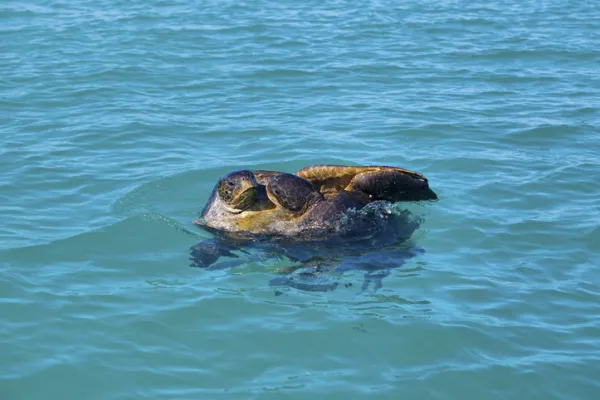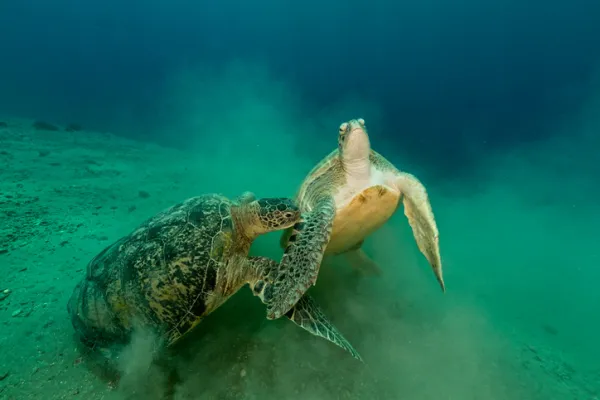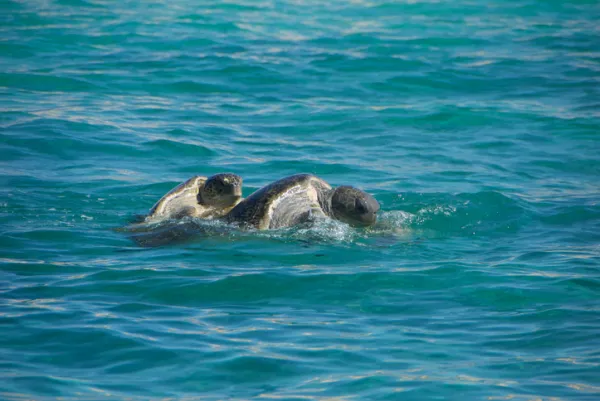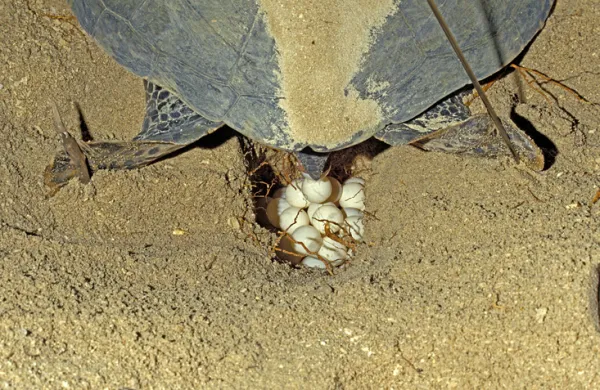Sea turtles are among the most iconic marine creatures, yet much of their life cycle remains a mystery. Even today, scientists continue to discover new insights about these ancient animals.
In this article, we explore the fascinating world of sea turtle reproduction — from how they mate, when they nest, how they lay eggs, to how their hatchlings make their way to the sea. Whether you're a nature lover or a conservation enthusiast, this guide will help you understand one of the most remarkable reproductive journeys in the animal kingdom.

Sea turtles reproduce sexually and are oviparous, meaning they lay eggs from which the young hatch. Unlike some reptiles, no species of sea turtle gives birth to live young.
After mating in the ocean, female turtles come ashore to dig nests in the sand. They lay fertilized eggs through their oviduct, cover them with sand, and return to the sea, never looking back. After an incubation period, the baby turtles hatch, dig out of the nest, and instinctively crawl toward the ocean.
Although not fully understood, researchers have observed some common courtship behaviors:
Location: Mating typically occurs near coastal waters close to nesting beaches.
Male behavior: Males often bite the female’s flippers to get her attention or compete with other males for access to a single female.
These behaviors are part of a larger underwater mating ritual that helps determine reproductive success.

Once a female accepts a male, mating takes place in the water. The male climbs onto the female’s shell and uses his front flippers — equipped with claws — to grasp the top of her shell. Internal fertilization then occurs.
Importantly, female sea turtles often mate with multiple males in a single breeding season, so eggs in one nest may have different fathers.
Only females return to land to lay eggs; males almost never return to shore after they hatch and enter the sea as hatchlings.

The age at which sea turtles reach sexual maturity varies by species but is generally quite late:
Average age: Around 30 years old.
Green sea turtle: Can take up to 50 years to mature, though some may begin as early as 17.
This long maturation period makes turtle populations slow to recover.
The timing of sea turtle reproduction depends on the species and even regional differences within the same species.
Examples include:
Leatherback turtle: Breeds during the wet and warm seasons.
Tropical Americas: February to July.
Atlantic coast of Africa: November to March.
Loggerhead turtle: More consistent breeding pattern, typically starting in early spring.

Sea turtle nesting behavior is still being actively studied. While many species exhibit natal homing (returning to the beach where they were born), some species, like the leatherback, may choose different nesting sites hundreds of kilometers apart.
Factors influencing nest site selection may include:
Underwater topography.
Sand type and texture.
Beach vegetation and rock formations.
Beach arrival: Females choose a spot on the beach, sometimes the same location each time.
Digging the nest: Using front and back flippers, they dig a deep hole.
Laying eggs: Eggs are laid into the hole via the oviduct.
Covering the nest: Once finished, females cover the eggs with sand.
Return to the sea: The mother leaves immediately and will not return to the nest.
Nesting is an exhausting process. Out of water, turtles move slowly, making them more vulnerable and requiring immense energy to dig, lay eggs, and bury them safely.
The number of eggs varies by species and even between nests of the same species:
Loggerhead turtle:
Florida: 100–125 eggs per nest.
Cape Verde / Mediterranean: 65–95 eggs.
Green turtle: 110–130 eggs per nest.
Leatherback turtle: 80–90 eggs per nest.
Some nests may contain as few as 30 eggs or as many as 150+.
The incubation period averages around 60 days, but can vary depending on temperature and environmental conditions.
A fascinating fact: the sex of sea turtle hatchlings is determined by nest temperature:
At ~29.5°C: Balanced ratio of males and females.
Above 29.5°C: More females hatch.
Below 29.5°C: More males hatch.
This means climate change is directly affecting turtle populations by skewing gender ratios.
While witnessing sea turtles hatch is an incredible experience, interference from humans can be harmful.
If you find:
Unhatched eggs;
Hatchlings trying to reach the sea;
Do not touch or relocate them. In many countries (e.g., Spain), you're advised to call emergency services (like 112) who will alert marine rescue groups such as the CRAM Foundation (Marine Animal Recovery Center).
They are responsible for:
Monitoring and protecting turtle nests;
Ensuring as many hatchlings as possible survive and reach the sea;
Occasionally raising a few individuals in safe environments for later release.
This approach helps increase survival rates by allowing some turtles to reach maturity, when they face fewer predators and have a better chance of reproducing.
Sea turtle reproduction is a slow, energy-intensive, and high-risk process. Every hatchling that makes it to the ocean represents decades of evolutionary adaptation — and human stewardship.
If you'd like to support sea turtle conservation:
Donate to organizations like the CRAM Foundation.
Volunteer at marine conservation centers.
Spread awareness about responsible beach behavior during nesting season.
You may also like:
[Types of Sea Turtles and Their Habitats]
[Why Are Sea Turtles Endangered?]
[How to Join a Sea Turtle Volunteer Program]
Let’s protect these ocean wanderers for generations to come.
animal tags: Turtles Reproduce
We created this article in conjunction with AI technology, then made sure it was fact-checked and edited by a Animals Top editor.